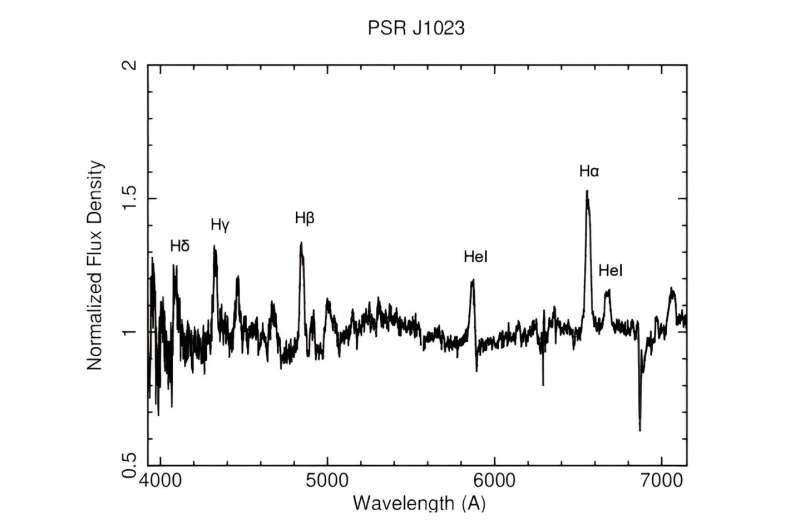Astronomers have made groundbreaking observations of a unique type of pulsar, known as a transitional millisecond pulsar (MSP), shedding light on its complex and dynamic nature. This blog post explores the findings from the recent study of PSR J1023+0038, one of the few known tMSPs, and the insights it provides into these rare celestial objects.

Unraveling the Secrets of Transitional Millisecond Pulsars
Pulsars are some of the most exotic processes in the universe — super-dense, rapidly-spinning neutron stars emitting beams of electromagnetic radiation. The fastest pulsars in the universe are millisecond pulsars (MSPs) which spin at least in 30 milliseconds periods, or even less.
MSPs are thought to be created in binary systems, with the higher-mass component becoming a neutron star that is ‘rejuvenated’ after gaining matter from the other star. Nevertheless, one group of MSPs undergo a peculiar behavior: the transitional millisecond pulsars (MSPs) that interchange between radio pulsar state and X-ray pulsations together with accretion disk features in optical spectra.
Shedding Light on the Enigmatic PSR J1023+0038
One of the so-called tMSPs is PSR J1023+0038, discovered almost two decades ago. It orbits its late-type G5 companion every ~4.75 hours, but it is also a pulsar with a spin period of 1.69 milliseconds.
An international team of astronomers, led by Marco Messa of the University of Milan in Italy, performed high-temporal-resolution optical spectroscopic observations with the Gran Telescopio Canarias (GTC) in Spain. Their results, presented on the preprint server arXiv, offer important new information on the properties and future evolution of this fascinating astronomical entity.
These observations showed the tMSP PSR J1023+0038, typical of other tMSPs, displays short-term (< tens of seconds) flux variability at all observed wavelengths. The authors noted, however, more strikingly large variability on timescales of minutes in emission line properties such as equivalent width and full width half maximum. It’s a rarely seen short-term variability in the spectral line properties of tMSPs.
Conclusion
The team of astronomers has studied PSR J1023+0038 in detail, and their observations [published here] reveal the transitional millisecond pulsar to be a veritable beast of complex and dynamic behavior. This is an important finding because the short-term variability in the emission line properties can provide multiple clues to understand mechanisms behind mode-switching phenomena similar to this very rare celestial object. Future multi-wavelength follow-up observations and thorough modeling will be necessary to begin addressing the remaining questions on how tMSPs act as link between the persistent LMXBs and on their role in binary evolution.
